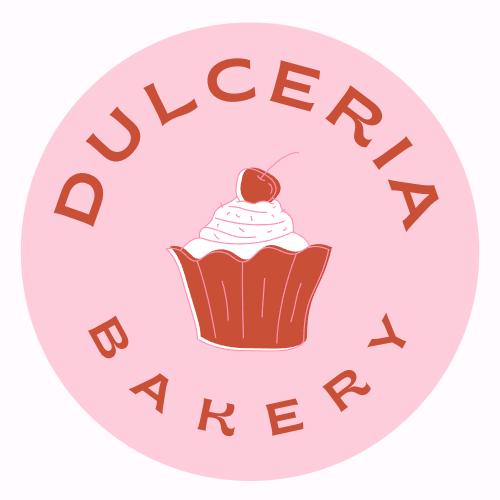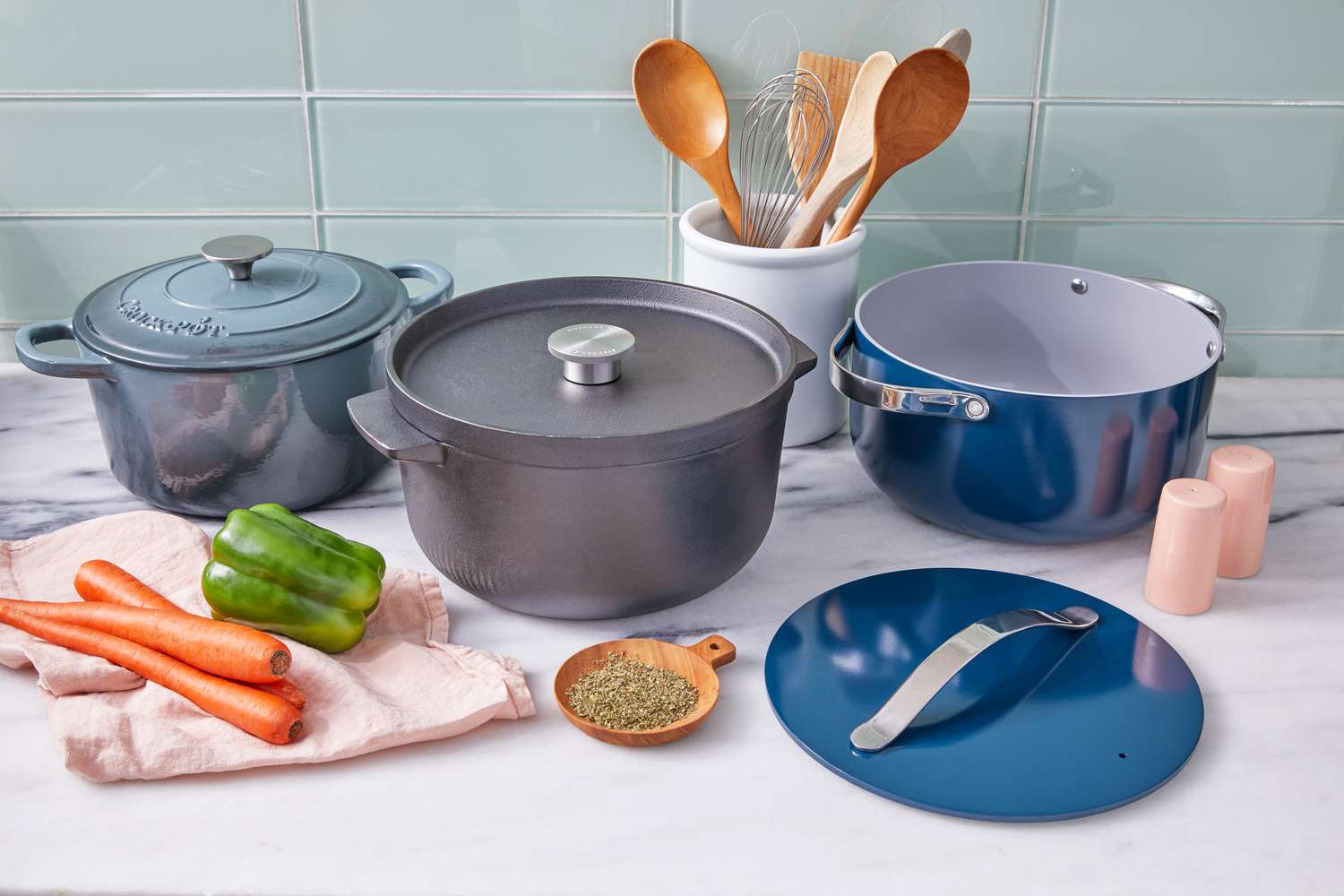A Dutch oven is a heavy-duty cooking pot that is typically made of cast iron or enameled cast iron. It is known for its versatility in cooking and is often used for slow-cooking dishes such as stews and braises. However, it can also be used for deep frying due to its thick walls and even heat distribution. Dutch ovens come in different sizes and are suitable for use both indoors and outdoors. When it comes to deep frying, a Dutch oven can hold a large amount of oil and maintain a consistent temperature, making it a popular choice for many home cooks and professional chefs alike.
Can I use a Dutch oven as a deep fryer?
Yes, a Dutch oven can be used as a deep fryer. It is a versatile cooking vessel that can handle high heat and has high sides that help contain oil and prevent splattering. However, it is important to note that a Dutch oven may not be as efficient as a dedicated deep fryer, and you may need to adjust cooking times and temperatures accordingly. Additionally, it is important to use a thermometer to ensure that the oil is at the correct temperature and to be cautious when working with hot oil.
Can I use my Dutch oven as a frying pan?
Yes, you can use your Dutch oven as a frying pan. A Dutch oven is a versatile piece of cookware that can be used for a variety of cooking methods, including frying. It is especially good for dishes that require a longer cooking time or that need to be cooked slowly over low heat, such as stews or braises.
When using a Dutch oven as a frying pan, you will want to make sure that the oil or other fat you are using is hot enough before adding your food. You may also need to adjust the cooking time and temperature to suit the specific recipe you are following.
Keep in mind that a Dutch oven is typically heavier than a traditional frying pan, so you may need to use a bit more care when handling it on the stovetop. Additionally, some Dutch ovens are not recommended for use on high heat, so be sure to check the manufacturer’s instructions before using it as a frying pan.
Can you fry in a Dutch oven with the lid on?
While you can fry in a Dutch oven with the lid on, it is generally not recommended. When you fry food, moisture is released, and the lid can trap that moisture, which can cause your food to become soggy instead of crispy. Additionally, if the lid is not removed carefully, hot oil may splatter and cause burns or other injuries. Therefore, it is typically best to leave the lid off when frying in a Dutch oven.
What heat is best for deep frying?
The ideal temperature for deep frying depends on the food you are frying, but generally, a temperature range of 350-375°F (175-190°C) is considered ideal for most foods. This temperature is hot enough to quickly cook the food and create a crispy exterior, but not so hot that it burns the food or the oil. It’s important to use a thermometer to monitor the temperature of the oil and adjust the heat as necessary to maintain a consistent temperature.
What size Dutch oven is best for deep frying?
For deep frying, a Dutch oven that can hold at least 6 quarts of oil is recommended. This will provide enough space for the food to be submerged in the oil and allow for adequate circulation to ensure even frying. However, the size of the Dutch oven needed may vary depending on the amount of food being fried and the size of the food items.
How to choose the best Dutch oven for deep frying
When choosing a Dutch oven for deep frying, there are a few factors to consider:
- Size: As mentioned earlier, a Dutch oven that is at least 5-6 quarts in size is recommended for deep frying. This allows enough room for the oil to expand and for the food to be submerged.
- Material: Look for a Dutch oven made of heavy-duty materials such as cast iron or stainless steel. These materials are durable, retain heat well, and distribute heat evenly, which is important for achieving consistent frying results.
- Shape: A Dutch oven with a wide base and tall sides is ideal for deep frying as it provides plenty of surface area for cooking and prevents oil from splattering.
- Handles: Make sure the Dutch oven has sturdy, heat-resistant handles that are easy to grip and maneuver. This is especially important when it comes time to remove the pot from the heat source or pour out the hot oil.
- Lid: While not absolutely necessary, a Dutch oven with a tight-fitting lid can help regulate temperature and prevent splatters.
- Maintenance: Consider the ease of cleaning and maintenance. A Dutch oven with a non-stick coating can make cleanup easier, but may not be as durable as a cast iron or stainless steel pot.
Overall, a Dutch oven is a versatile and durable choice for deep frying, and choosing the right size, material, shape, handles, lid, and ease of maintenance will help ensure successful and enjoyable frying experiences.
What are the best Dutch ovens for deep-frying?
There are several Dutch ovens that are suitable for deep-frying, depending on your specific needs and preferences. Here are some of the best Dutch ovens for deep-frying:
- Lodge Cast Iron Dutch Oven: This is a highly popular and durable Dutch oven made of cast iron that is suitable for deep-frying. It comes in various sizes and is known for its even heating and ability to retain heat.
- Le Creuset Dutch Oven: Another highly reputable brand, Le Creuset offers Dutch ovens made of cast iron with enamel coating, making it easy to clean and preventing rusting. It also comes in various colors and sizes.
- Cuisinart Chef’s Classic Dutch Oven: This Dutch oven is made of stainless steel, making it durable and resistant to rust. It is also relatively lightweight compared to cast iron Dutch ovens, making it easier to handle.
- Tramontina Enameled Cast Iron Dutch Oven: This Dutch oven is made of cast iron with enamel coating, making it non-stick and easy to clean. It also comes in various colors and sizes.
- Calphalon Classic Nonstick Dutch Oven: This Dutch oven is made of hard-anodized aluminum and is non-stick, making it easy to clean and preventing food from sticking to the bottom.
Overall, the best Dutch oven for deep-frying will depend on your specific needs and preferences, such as material, size, and budget.
Benefits of using Dutch oven for deep frying
Using a Dutch oven for deep frying has several benefits, including:
- Heat retention: A Dutch oven is typically made of heavy materials such as cast iron, which means it can retain heat for a long time. This is useful when deep frying because it helps to maintain a consistent temperature, which is essential for achieving perfectly cooked food.
- Even cooking: The heavy and thick walls of a Dutch oven help to distribute heat evenly throughout the cooking surface, ensuring that food is cooked uniformly.
- Versatility: A Dutch oven is a versatile cooking tool that can be used for a variety of cooking methods, including deep frying, stews, braises, and roasts.
- Durability: Dutch ovens are made of durable materials such as cast iron or stainless steel, which means they are built to last. They can withstand high temperatures, and when properly cared for, can last for many years.
- Safety: The high sides of a Dutch oven help to prevent oil splatters and spills, making it a safer option for deep frying.
- Flavor: Using a Dutch oven for deep frying can add a unique and delicious flavor to your food, as the cast iron can impart a subtle smoky taste.
Overall, using a Dutch oven for deep frying can result in delicious and perfectly cooked food, with the added benefits of versatility, durability, and safety.
How to use Dutch oven for deep frying
Here’s how to use a Dutch oven for deep frying:
- Choose the right oil: Use an oil with a high smoke point, such as canola oil, peanut oil, or vegetable oil. Avoid using olive oil or butter as they have a lower smoke point and can burn easily.
- Fill the Dutch oven with oil: Pour enough oil into the Dutch oven so that it covers the food you will be frying. Be sure to leave at least 2-3 inches of space at the top of the Dutch oven to prevent oil from overflowing during cooking.
- Heat the oil: Turn on the stove and heat the oil to the desired temperature. Use a thermometer to ensure that the oil is at the correct temperature for deep frying.
- Prepare the food: While the oil is heating up, prepare the food you want to fry. Dip the food in a batter or coating if desired.
- Fry the food: Carefully place the food in the hot oil, using a slotted spoon or tongs. Fry until the food is golden brown and cooked through.
- Drain and serve: Use a slotted spoon or a wire rack to remove the food from the Dutch oven and let it drain on paper towels. Serve hot and enjoy.
- Clean the Dutch oven: Once the Dutch oven has cooled down, discard the used oil and wipe the interior with paper towels or a sponge. If there is a lot of leftover oil, you can strain it and reuse it later. Be sure to clean the Dutch oven thoroughly to avoid any residual oil from going rancid.
Is it better to deep fry in a wok or Dutch oven?
Both a wok and a Dutch oven can be used for deep-frying, but they have different characteristics that may make one better suited for your needs than the other.
A wok is traditionally used in Asian cooking and is designed to provide even heat distribution across the entire surface, making it ideal for stir-frying and deep-frying. Its curved shape allows for easy stirring and tossing of ingredients, while its high walls prevent oil from splattering.
On the other hand, a Dutch oven is a heavy and sturdy pot with thick walls and a tight-fitting lid, typically made of cast iron or enameled cast iron. It’s designed to retain heat and distribute it evenly, making it a good choice for deep-frying, slow-cooking, and braising. Its deep sides help prevent oil from splattering, but its flat bottom may not be as efficient for stirring and tossing ingredients as a wok.
Ultimately, the choice between a wok and a Dutch oven for deep-frying comes down to personal preference and the type of food you are cooking. If you are deep-frying larger items or want to retain heat over a longer period of time, a Dutch oven may be a better choice. If you are looking for a versatile pan that can also be used for stir-frying and other cooking techniques, a wok may be a better option.
Which metal is best for deep frying?
When it comes to deep frying, metals that are good heat conductors and can maintain a stable temperature are the best choices. The most popular metals used for deep frying are stainless steel, cast iron, and carbon steel.
Stainless steel is a good choice because it is durable, non-reactive, and easy to clean. It is also resistant to corrosion and does not affect the flavor of the food. However, stainless steel does not conduct heat as well as other metals, so it may take longer to heat up and may not maintain a consistent temperature as well.
Cast iron is a great choice for deep frying because it is an excellent heat conductor and can maintain a consistent temperature, making it ideal for frying. It is also very durable and can be used on a variety of heat sources, including gas, electric, and induction. However, cast iron can be heavy and require more maintenance than other metals.
Carbon steel is also a popular choice for deep frying because it is a good heat conductor and can maintain a consistent temperature. It is also lightweight and durable, making it easy to handle. However, carbon steel can be reactive with acidic ingredients, which can affect the flavor of the food. It also requires seasoning to prevent rusting.
In summary, each metal has its own advantages and disadvantages, and the best metal for deep frying ultimately depends on personal preference and cooking needs.
Is it better to deep fry in cast iron or stainless steel?
Both cast iron and stainless steel are good options for deep frying, but they have different characteristics.
Cast iron is an excellent heat conductor and can retain heat for a long time. This means that it can provide an even and consistent temperature for deep frying, which is important for achieving crispy and evenly cooked food. Cast iron is also durable and can last for generations with proper care. However, cast iron can be heavy and requires seasoning to prevent rust and maintain its non-stick surface.
Stainless steel is also a good option for deep frying because it is durable, easy to clean, and does not require seasoning. It is a good heat conductor, although not as good as cast iron. Stainless steel may not retain heat as well as cast iron, but it can still provide a consistent temperature for deep frying.
In general, both cast iron and stainless steel can work well for deep frying. The choice between them depends on personal preference and cooking needs.
How do you clean a Dutch oven after deep-frying?
Cleaning a Dutch oven after deep-frying is important to maintain its quality and prevent any buildup that can affect the taste of the food. Here are the steps to clean a Dutch oven after deep-frying:
- Allow the Dutch oven to cool down completely before cleaning.
- Remove any leftover oil or food debris with a paper towel.
- Pour hot water into the Dutch oven and let it soak for a few minutes.
- Scrub the Dutch oven with a non-abrasive sponge or brush to remove any remaining food particles or stains.
- Rinse the Dutch oven thoroughly with hot water and dry it with a clean towel.
- If there are any stubborn stains or residue, create a paste of baking soda and water and apply it to the Dutch oven. Let it sit for a few minutes before scrubbing and rinsing.
- Finally, apply a light coating of cooking oil to the Dutch oven to prevent rusting.
Note: Avoid using harsh chemicals or steel wool on the Dutch oven as it can damage the seasoning and non-stick coating.
Related Posts
Can a Dutch oven work with an induction cooktop?
Disclaimer: There are affiliate links in this post. At no...
Read MoreBest Dutch Oven For Camping
Disclaimer: There are affiliate links in this post. At no...
Read MoreBest Dutch Oven For Sourdough Bread
Disclaimer: There are affiliate links in this post. At no...
Read MoreThe Best Dutch Oven For Bread: A Comprehensive Guide
Disclaimer: There are affiliate links in this post. At no...
Read MoreWhy Trust Us
You will find what you are looking for at dulceriabakery. From classic to luxury brands, you'll find both. We will help you to select appliances that fit your needs, budget and lifestyle. Whether you want to stop by to learn more — or plan to make a major purchase — we’ll treat you like family and assist you every step of the way. Shop with us today to receive friendly and experienced help along the way.




